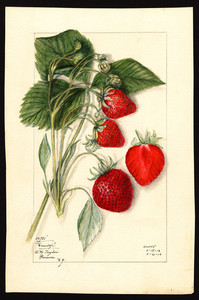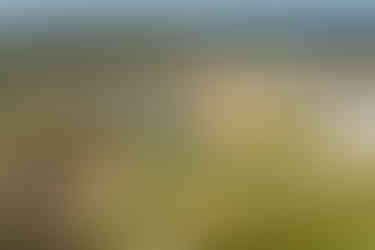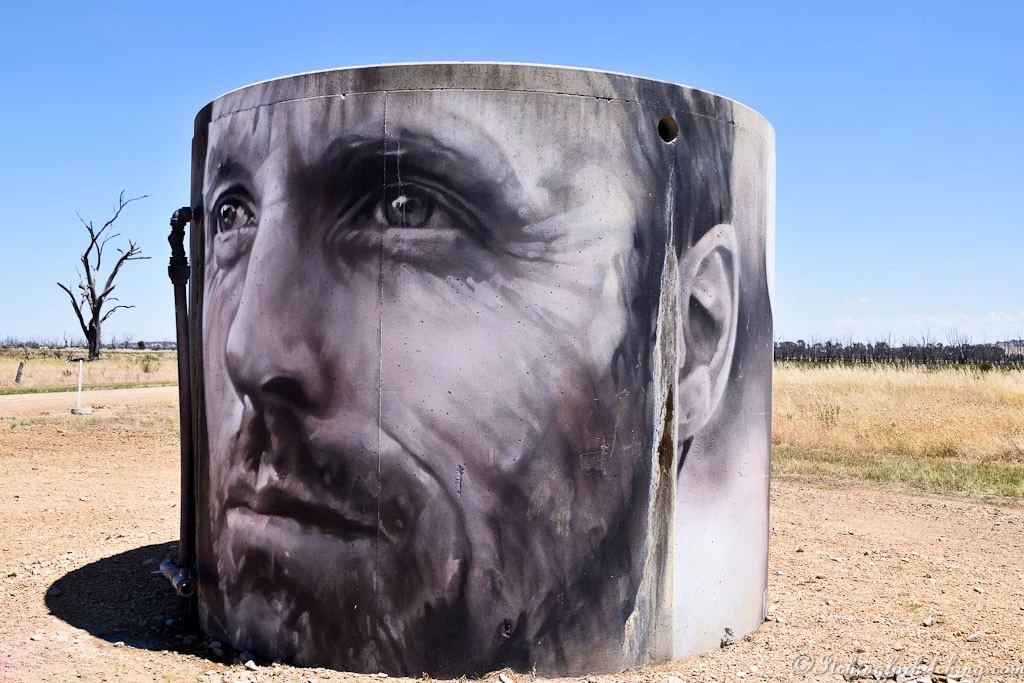Apples from Winton
- rosemary
- Oct 13, 2023
- 8 min read
"Passing time adds false memories and modifies real ones." Stephen King

Eons ago I studied geography as one of my three A-level subjects. It's the one I did best at and probably should have studied at university. But that's a whole other story.
As part of the syllabus we studied, quite coincidentally, because of how my life has turned out, the geography of Australia. Of course there are all sorts of things I learnt, but in the section on what Australia produced agriculturally speaking and where it was produced I have, lodged in my brain, the phrase "Apples from Winton", as one of the facts we had to learn and spit out again in the exams, or the weekly tests. Teaching and learning was very old-fashioned back then. We were told facts, wrote them down, remembered and spat them out again in answer to questions in exams.
Anyway for some reason, that phrase "Apples from Winton" out of all the hundreds, nay thousands of other phrases I would have heard in my long ago schooldays, has stuck. Why oh why? I wasn't particularly interested in apples, and, at that moment in time, only passingly interested in the geography of Australia. It is also not associated with some other random instance, such as being humiliated or even praised in some way, but somehow that phrase had a rhythm, or a vibration that registered in my brain and has stayed there ever since, and is occasionally retrieved, recited in my mind and put back in its place again. So today I decided to explore that phrase - thinking I would just discover a few more geographical facts - but oh no - there is so much more. There always is. Look at a combination of two words and there is always so much more than the obvious.

So here beginneth a ramble around those two words - apples, and Winton - we'll ignore the 'from' for the moment. That poster above, by one Mary Daisy Arnold is of a variety of apple called a Winton (Malus domestica) which originated in Ottawa, Canada - sort of a polar opposite to Australia. Mary Daisy Arnold (1873-1955) worked for the United States Department of Agriculture for over 35 years, beginning in 1904, as part of a team of 65 artists who documented the varieties of fruit and vegetables which were being experimented with at the time. She also painted some landscapes in oil. The collection of watercolours - The Pomological Watercolour Collection is one of the most comprehensive of its kind in the world.
"Some 65 different artists are represented in the collection, of whom one-third were women; working as a government illustrator was one of the few artists' jobs open to women at a time when they were just beginning to be able to gain formal training in American art schools. All but a handful of the collection's 7584 watercolors were created by just nine of the artists, of whom six were women. The top three contributors were Deborah Griscom Passmore, Amanda Almira Newton, and Mary Daisy Arnold, who each painted over 1000 watercolors and between them are responsible for half the collection." Wikipedia
Mary Daisy Arnold herself painted 1060 watercolours between the years of 1908 and 1940. Some of them are lovely - as these three different strawberry paintings attest.
Even the Winton apple, which is a pretty straightforward composition is attractive. I wouldn't mind having it on my wall. So ramble number one from which I learnt something completely new, and through which my mind drifted to wonder about the lives of those three women.

Still on the art related. This is a painting by a contemporary artist called Jane Winton who seems to often paint apples, which is how she turned up on a Google Images search for winton and apples. This is one of the many, she has created. I couldn't find out much about her other than that she is British, and there are lots of her paintings in Google Images. She has a Facebook page where she says:
"All my paintings seem to grow a story as I draw them, more animal friends appear as details are added."
Not a great artist I'm sure - you can buy one for not very much at all - but it's nice to know that people are out there creating things, which are sort of oldy worldy and dreamlike. I suppose this is the naïve style popularised by Henri Rousseau, who was, of course, much greater. I suppose this is a bit twee.
Nevertheless when you start Googling whether articles or images, you discover whole lives, and small endeavours that you might otherwise not know about.

Final arty thing I promise. When I started my Googling apart from getting a whole lot of stuff about Apple the company a large number of the hits I first got were of Royal Winton pottery. This is an example of a dish made to look like a basket of apples. And apples do appear on their products quite frequently. Apparently their Chintz range is their most famous and features apples. Royal Winton is a range that was made by Grimwades a Stoke-on-Trent pottery company founded by two brothers, Leonard Lumsden and Sidney Richard Grimswade in 1885. I don't think the company still exists, although possibly it still does but under the name Royal Winton. Anyway I guess I was mildly interested because my university (Keele) was just outside the Stoke-on-Trent conurbation - the potteries or the Pots as we called it. And if I had indeed studied geography there I am sure that the potteries would have appeared in the syllabus.

Which brings me back to my long ago geography lessons and "apples from Winton". Associated with the statement was a vague memory of a location on a map of Australia a copy of which would have been distributed to us all - well all 7 of us. I think there were only 7 girls doing A-level geography - it was a girls's grammar school - a state school not a private one. The map would have been produced on a machine like this - a Roneo machine with purple ink. Do you remember them? This was in the days before photocopiers and the machines were not accessible to the students. Teachers' use only. The things that get dredged up when you start exploring words. The location I vaguely remember was somewhere around the border between Victoria and New South Wales. So I decided to find Winton and see if indeed it was a centre of apple growing either then or now. Because surely these days most of our Australian apples come from here in Victoria or in Tasmania. It's a cool weather crop isn't it?

Well I found three Wintons. The first is this one, Winton, Queensland and outback Queensland at that. Famous for the first performance of Waltzing Matilda, dinosaur bones and tracks, an outback festival that includes a dunny race and the founding of QANTAS. It's 'near' to Longreach. It's situated over the Great Artesian Basin, is liable to drought and sometimes flood and has a population of somewhere between 800 and 900. Sheep and cattle, unsurprisingly are the main agricultural industries. Obviously not a location for growing apples. If you were in an aeroplane looking down at the place you would sort of wonder why it was there. It was named for a Winton in Dorset by its founder who came from there.
The second is Winton, Victoria, some 170km north east of Melbourne on the road to Sydney near Benalla and Glenrowan. Ned Kelly country. These days its claim to fame is threefold - a massive solar farm, some restored wetlands, and a drag racing circuit. Although I should not forget the water tank art, which is very striking, quite different from the art I talked about before, and probably part of the trail that now exists for such art.
Not much mention of apples though. Apples in Victoria mostly come from the Goulburn Valley although I do remember when we first came to Melbourne that the outer edges often boasted orchards, from which we would buy our apples. Some are still grown nearby in the Yarra Valley although, of course that is most famous for its vines and its wine. This Winton is named for a town in Cumbria.

Then there is Winton, New South Wales. Well no there isn't really. This is a satellite view of Winton on Google Maps. There appears to be nothing there at all, and other maps show the same. I did discover that it's near Tamworth - an actual city and part of the Council that governs the area of Tamworth and surrounds. And yes there is agriculture but apple orchards are not listed as a prime resource.

It's all a complete mystery, and no there are no more Wintons anywhere in Australia. So, is my memory wrong or was I actually told an untruth? The only true thing in any of this is that Australia is indeed a large producer of apples, Here is a map from Aussie Apples - and none of those areas are near the three Wintons. The NSW apple on the map coincides most closely with what I remember of the location I have to say, but as Winton New South Wales doesn't really exist, it's obviously not the locations of "Apples from Winton''.
I shall never know of course. And really what does it matter anyway? I don't really care where our apples come from, although when I am driving through the countryside of any country I am always interested in what the people of the region are doing and what industries justify the existence of those places. I learnt a whole lot of other things in my geography lessons which were true, many of them forgotten, but many not, and which have contributed to the knowledge lodged in my brain. Which, as one of my fellow Italian learners said yesterday, is the only organ in the human body that never stops growing. Even when bits of it die off, other bits grow. Every day produces a new memory or two which needs to be stored somewhere. Every day we learn some new fact which is also stored away. And even all those things that were stored there and which we think are forgotten are very probably still there somewhere in some tiny electric particle. If that's how it works. I'm not a biologist.
"The difference between false memories and true ones is the same as for jewels: it is always the false ones that look the most real, the most brilliant." Salvador Dali
In the case of 'brilliant' I'm not sure that "Apples from Winton" shines that brightly. But shine it does, in the sense that I remember it, even if the memory is slightly wrong. It must be. Maybe it's something to do with the juxtaposition of that sequence of sounds, that is somehow pleasurable. Surely Miss Seymour - that was her name - my geography teacher - would not have told us an untruth. Although she would just have got it from some textbook somewhere. Maybe that author had it wrong. Seymour - there's another coincidence. Another town on the Hume Highway - not that far from Winton, Victoria. In Australian terminology of 'not far' that is.
But look I've learned a few more trivial, unimportant, even uninteresting things. I have asked myself yet more questions (without answers) of how memory works. I found some rather beautiful botanical drawings. Somebody should write a book or make a film about those early twentieth century ladies working away at drawing every type of vegetable and fruit for the Department of Agriculture for years and years. I'm sure there is a lot to learn about them. So here's to Mary Daisy Arnold and her companions Deborah Griscom Passmore, Amanda Almira Newton, and lost memories of youth - theirs and mine.












Comments